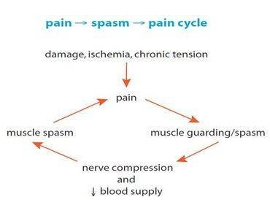- 905.829.0724
- info@yourhealthwellnesscentre.com


Your muscle pain is because of nerve compression and decreased blood supply.
Massage helps relieve your nerve compression and increase blood circulation.
A spasm is an involuntary contraction of a voluntary muscle due to stress, injury, or chronic tension. This contraction causes nerve compression and ischemia due to lack of blood supply and forms a pain → spasm → pain cycle. The severity of these episodes depends on how much of the muscle is involved.
Spasms are considered to be low-grade, long-lasting contractions and can be painful, involving whole muscles or muscle groups. This situation can persist without any real relief until the circle of pain is interrupted.
Massage is a much-used strategy to manage long-term, low-grade muscle spasms. Stretching and massage at the attachment sites of contracting muscles are often effective strategies for reducing muscle tension.
Muscles that have been in involuntary contraction respond well to massage, which can reduce residual pain and improve local circulation. Massage can help to re-establish efficient movement, but this is best done incrementally to avoid the risk of reinjury.
Muscle spasm may also be treated with heat or ice, or local applications of ointments that create hot and cold sensations to alter local blood flow.